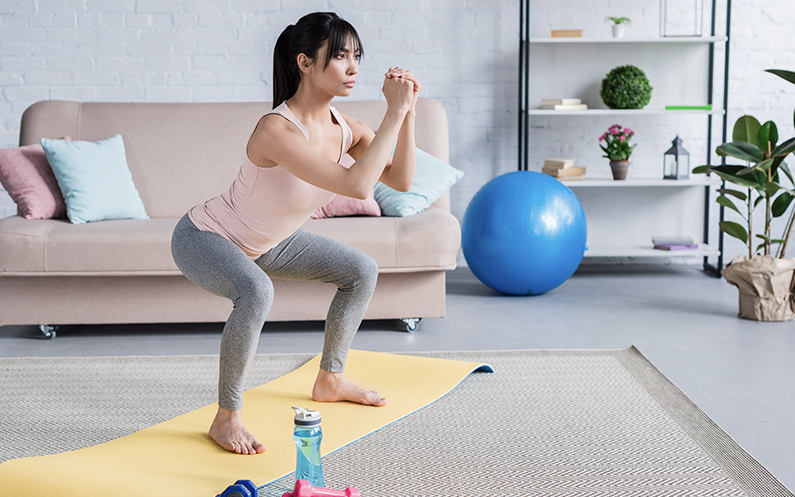Mastering the basics when it comes to gaining benefit from exercise is crucial, according to one fitness expert.
Steven Virtue, Fitness Development Manager at Total Fitness, explains that planning the right training programme is all about finding exercises which work for you and ones which be adapted comfortably to aid your level of fitness. Mastering the basic fundamental exercises are the perfect starting point, as they can be easily incorporated into any workout routine and developed further as you become stronger and more advanced.
Here, Steven shares his step-to-step guide to perform each of these exercises.
- Squat – bodyweight squat: Start with your feet hip width apart, or slightly outside with your toes turned outwards. From here, keep the chest up and send the hips back and down to knee level – or even lower if your mobility allows it. Drive through your heels to lift you back to the starting point and repeat the exercise. If you struggle with balance, place your arms out in front to help distribute your weight evenly. Perfecting the squat can help you in many ways as it strengthens your legs and will help you stand after sitting down.
- Bend – deadlift: Start with your feet shoulder width apart, placing them under the bar/dumbbell somewhere between the middle of the foot and shin. Grip it outside of the knees and maintain and straight, neutral spine. Next, squeeze your glutes and extend to a standing position. Then, hinge from the hips, pushing your hips back and maintaining a slight bend at the knee as you lower back to your starting position. If you’re a beginner, make sure to start with a small weight and build yourself up slowly.
- Push – push-up: Start in a straight arm plank position with the wrist and elbow directly underneath your shoulders. Next, lower yourself down by bending the elbows, bringing your chest to the floor. From here, extend yourself up with a gentle push back to your starting point. If you’re struggling on your toes, try doing this movement on an elevated surface to begin with, such as a wall. As you get stronger, lower the angle to increase the load until you can try this movement on your toes.
- Pull – row: Start the row with your feet underneath your hips, setting up the movement similar to that of the deadlift. Next, grab the barbell with a double overhand grip outside the knees, then hinge forward until your midline is roughly parallel to the floor, if your mobility allows it. Squeeze your lats muscle and pull the bar towards you until you make contact with your belly button, then slowly lower the bar to your starting position. Make sure to stay strong and maintain a stable position, keeping the midline parallel with the floor throughout.
- Single leg – lunge: Stand with your feet hip-width apart and standing up tall. Take a step forward with the left leg, then slowly bend both knees until the back knee is just above the floor, making sure that your left knee doesn’t pass over your left foot. Push yourself back up to the starting point from your front heel and repeat on the other leg.
- Core – forearm plank: Hold yourself parallel to the ground using your forearms, with your elbows directly underneath your shoulders at a 90-degree angle. Maintain a straight, flat back for the duration of the exercise by pulling down your ribcage and squeezing your glutes to maintain a solid structure. If you’re a beginner, start on your knees and with shorter intervals, building from 10 seconds, to 20 second and so on. The stronger you become, the longer you will be able to hold the plank.
- Rotation – landmine: Place your feet firmly, shoulder to hip width apart and keep the arms straight. Rotate to one side of the body, allowing the opposite leg, hip and ankle to rotate towards the direction of the barbell. Next, ensuring the supporting straight leg stays stacked under the hip and shoulders, rotate back to the centre and repeat on the other side.


